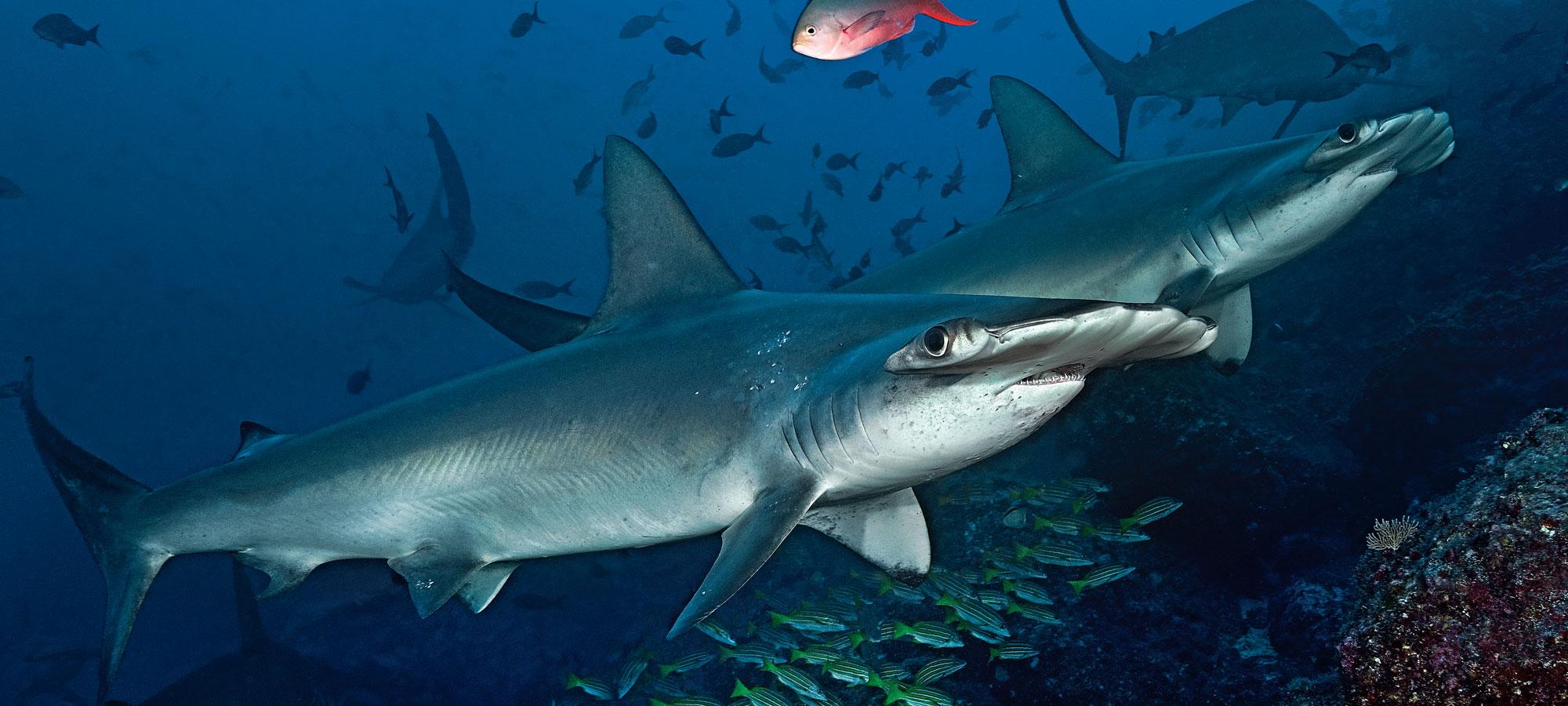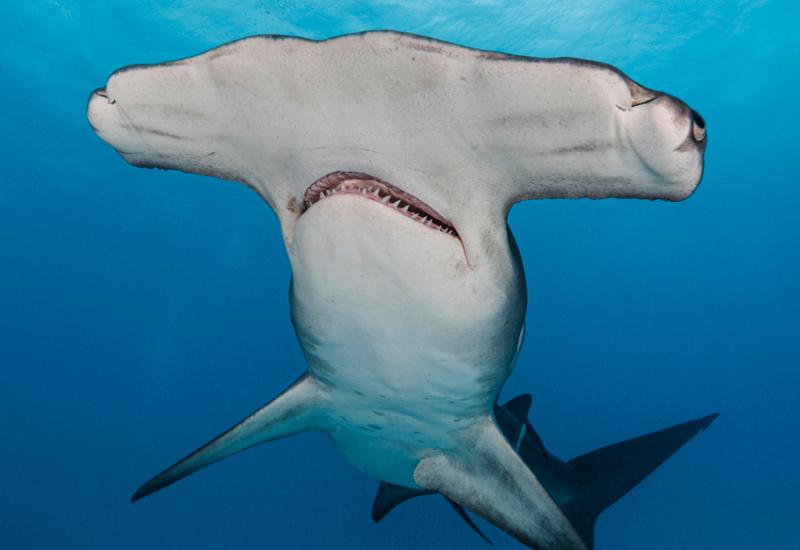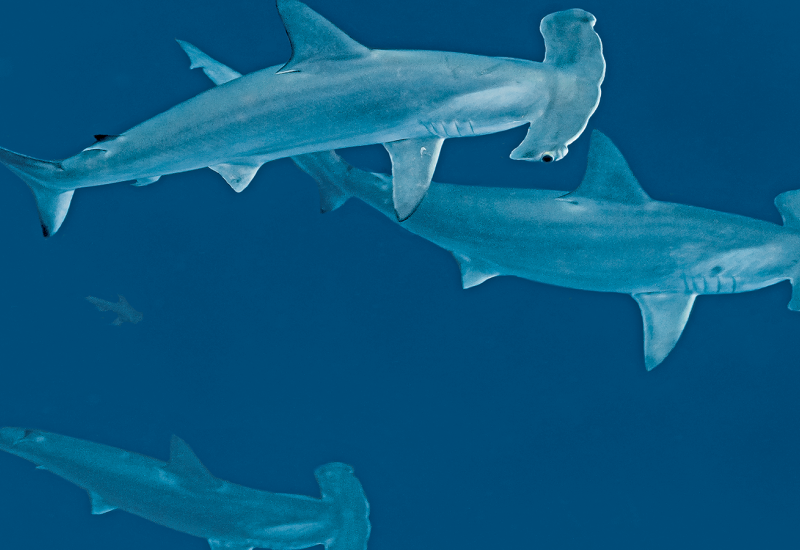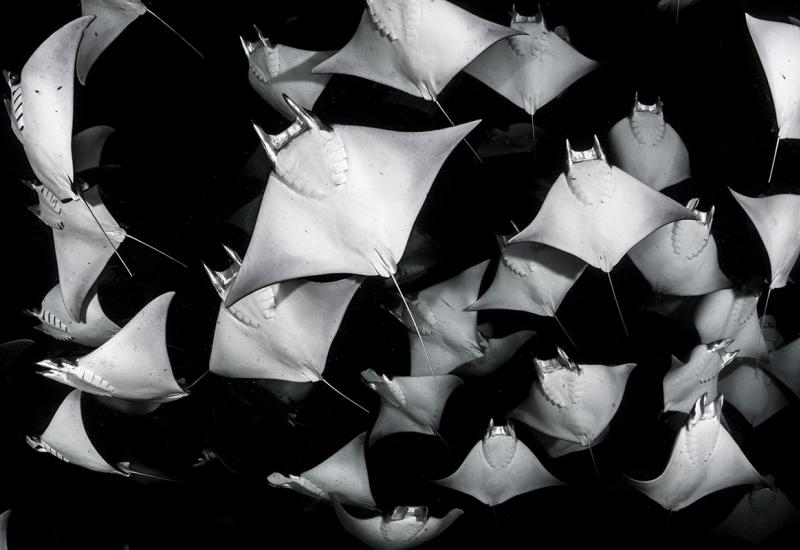Scuba Divers are Loco for Costa Rica's Cocos Island
Descending through a shimmering veil that reminds me of a portal from one of the Harry Potter tales, I am transported into a surreal world of beauty and chaos. The thermocline at 60 feet, off the southwest face of Dirty Rock—a craggy, guano-encrusted pinnacle beloved by shark aficionados and generations of “gotta go” boobies—not only filters the ambient light a notch or two, it also instantly drops the temperature from a comfortable 79 degrees F to a shiver-inducing 72. The discomfort doesn’t last long, as my senses are overwhelmed by a churning vortex of bigeye jacks and a majestic spotted eagle ray that glides below along steep, jagged walls.
Instead of succumbing to the ray’s siren call, I reluctantly motion my buddy to follow me to a nearby cluster of boulders. Numerous dives here have taught us that patience, hiding within the living camouflage of swarming blue-and-gold snappers and bigscale soldierfish, and hanging out near cleaning stations are the best ways to get close to the iconic scalloped hammerheads, Galapagos sharks and other prized subjects on our shoot list.
The cleaning station in front of us is staffed by pale yellow barberfish and bright-blue king angelfish, which are clearly advertising they are open for business. With fins flitting around our heads, we hunker down, stare out into the blue, and wait.
Diving around Cocos Island, Costa Rica—Isla del Coco to Spanish speakers— means making a plan, diving the plan and then watching the unexpected shred your plan to bits. Before we see a single scalloped hammerhead or Galapagos shark, my wife, Lauren, starts excitedly pointing down and to her right. Since animation of any kind is a violation of our cover, I know something is up. I turn to see a 17-foot juvenile whale shark slowly swimming in our direction.
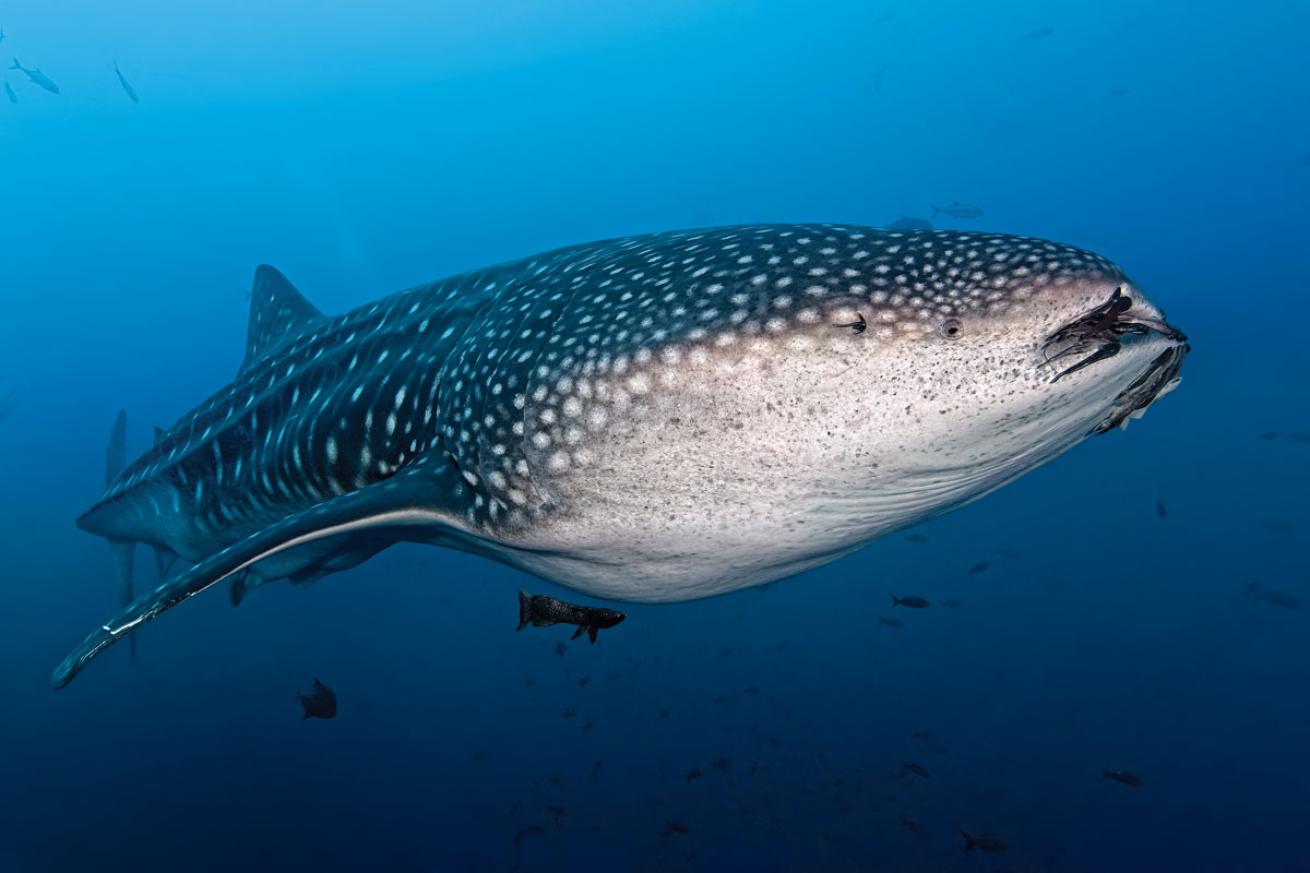
Scott JohnsonWhale sharks call this oasis home.
Then, just as I manage to lift free of the boulders and start toward the polka-dotted behemoth, Lauren frantically starts stabbing the water above and to her left. My eyes track her emphatic punctuations and find a 35-foot adult whale shark also heading our way. I look back to the juvie and then, following another understood code of Cocos diving— “Go big or go home!”—I push into the current to photograph the elder of the largest fish species.
When we climb back into one of Okeanos Aggressor I’s 22-foot pangas, Arjun Kapur, a well-traveled diver from San Francisco, looks at us with eyes as big as saucers and asks, “Was that in- sane or what? I didn’t know where to point my camera from one second to the next. Let’s do that again!” He gets no argument from anyone on board.
WHERE DREAMS COME TRUE
Cocos Island boasts some of the best dive sites in the world, but reaching it is not as easy as boarding a flight. This former haven for pirates is located 340 miles off the Costa Rican mainland in the Eastern Pacific. A liveaboard and 36-hour crossing are the only ways to explore the waters around this remote, uninhabited and rugged terrestrial rebellion against the vast open sea.
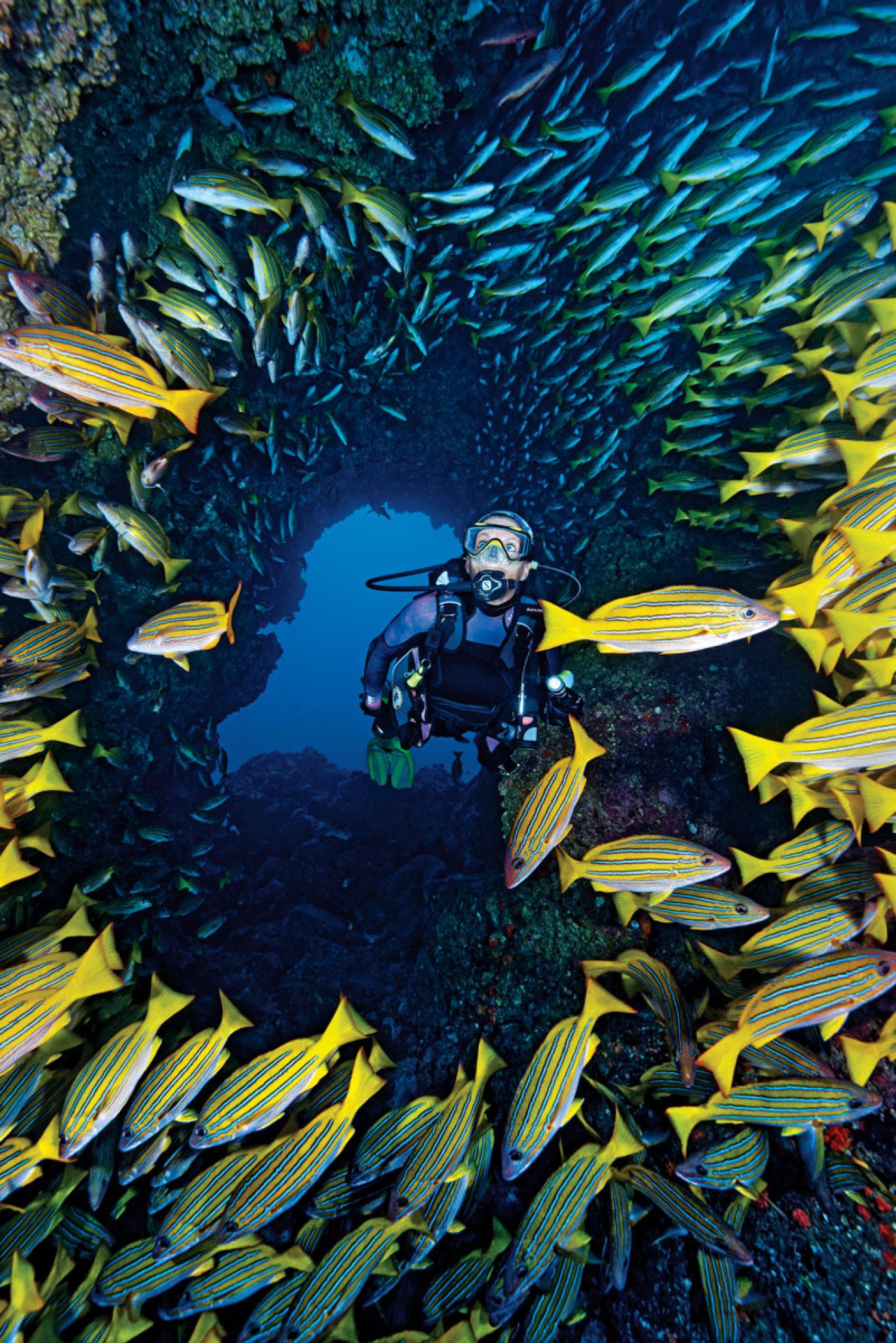
Scott JohnsonBlue-and-gold snapper congregate en masse.
My most vivid childhood dreams were of shark-infested waters, where I swam, Aquaman style, with all manner of otherworldly sea creatures. The early “real” dives I enjoyed as an adult were rewarding, but somewhat unfulfilling. It wasn’t until my first Okeanos Aggressor Cocos Island charter in the mid-1990s that I finally found that special place born in a young boy’s imagination.
A UNESCO World Heritage Site and the crown jewel of the renowned Costa Rican park system, Cocos is unlike any other place on the planet, basically a five-star seafood restaurant on an otherwise deserted stretch of marine highway.
The cool, nutrient-dense Equatorial Undercurrent continuously bathes the surrounding waters with plankton, a come-and-get-it beacon to pelagics including billfish, dolphins, rays, sharks and whales. It’s not unusual for divers to see six species of shark—Galapagos, scalloped hammerhead, silky, tiger, whale and whitetip reef—on a single dive.
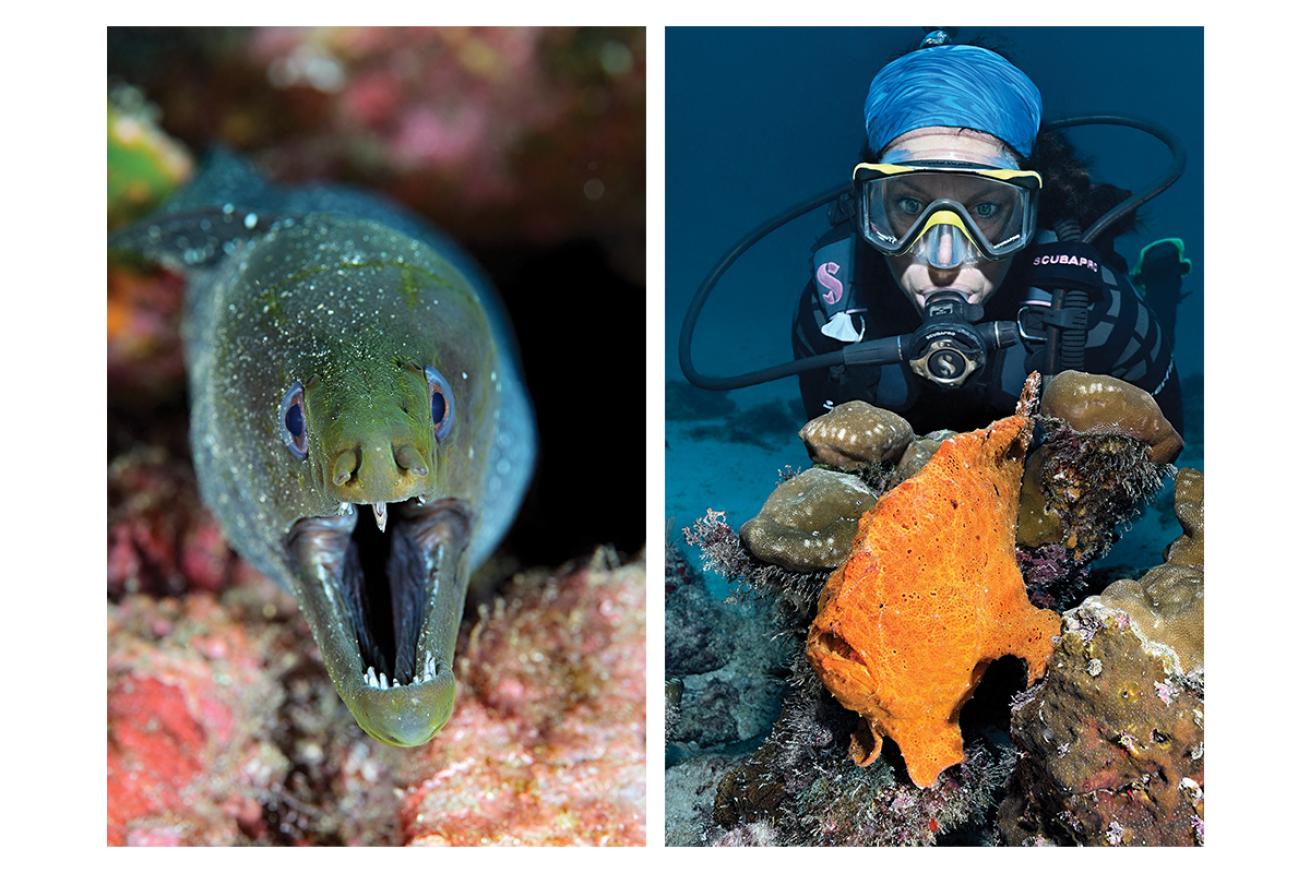
Scott JohnsonMoray eels and frogfish call this oasis home.
Marine mammals such as bottlenose dolphins, false killer whales, humpback whales, killer whales and pilot whales are frequent visitors. The most productive pelagic hotspots are usually Alcyone, Dirty Rock, Dos Amigos Grande, Manuelita and Punta Maria.
Okeanos Aggressor I has been our luxury dive yacht of choice for 11 unbelievable charters since it launched in 1988. When someone asks me about the vessel, I talk about the experienced dive guides, the right-on-time panga drivers and the three to four dives per day. Lauren, on the other hand, will almost always talk about the gourmet meals and fresh-smelling linens. Regardless, Okeanos continues to raise the bar on the first-class service that is the hallmark of the Aggressor Adventures fleet.
TIGERS 25, TURTLES 0
Okeanos and Cocos have endured changes over the past 30 years, although Capt. Mauricio Marin and Chef Douglas Sequeira were part of the crew during our initial voyage. We chat about the refits that continually reshape the yacht; the crewmembers who have retired; and the current state of Cocos.
“Global weather patterns have certainly impacted the island,” Marin says. “It has be- come more challenging to anticipate the current patterns and thus the animal activity. And, the tigers, man, they have changed both the diving and marine environment.” Warren Fernandez, Okeanos’ longtime cruise director, chimes in. “A tiger sighting was rare 15 years ago, and now we have at least 25 residents.”
This burgeoning population has all but wiped out once-plentiful sea turtles and prompted park rangers to add additional safety measures, including a temporary halt to night dives. Lauren and I encounter numerous tigers during dives around Manuelita, an islet off the northern tip of the main island, but none reacts to our presence other than to stay out of camera range.
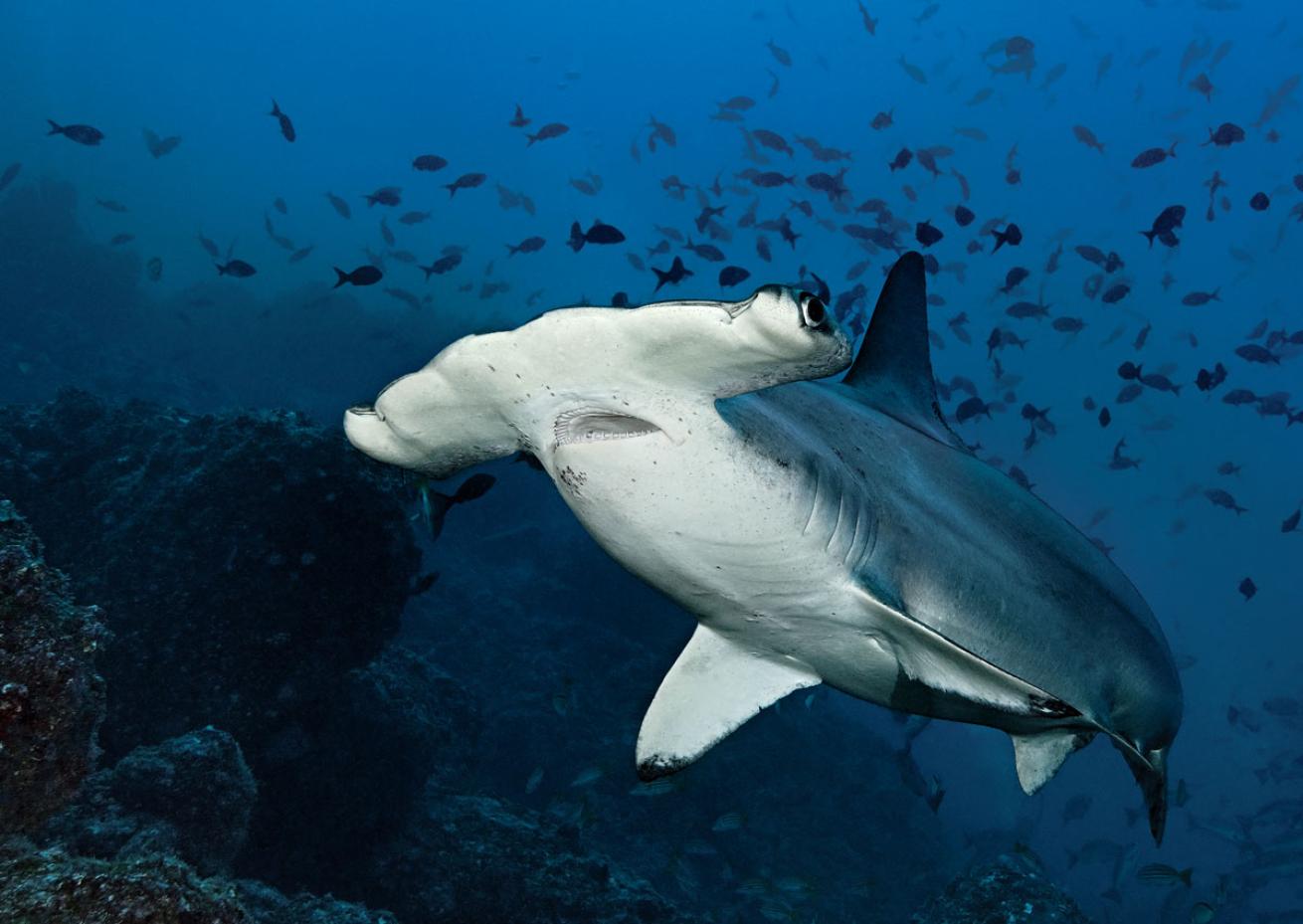
Scott JohnsonCocos is part of the Hammerhead triangle, along with Galapagos and Malpelo. Scalloped hammerheads are a common sight.
During our last dinner at Cocos, just before we start the return crossing to the mainland, we hear one of the crew exclaim, and what sounds like a bird squawk from the kitchen.
We look toward the commotion to see a large brown booby waddling toward us. With images of that surprising whale shark doubleheader at Dirty Rock swimming through my thoughts, I pick up the unusual dinner guest—making sure to keep its long beak away from my eyes—and stride toward the kitchen. Fernandez and Sequeira both start waving and saying, “Not this way!” I smile, reverse direction, exit through the salon and set the wayward bird on the starboard dive deck railing. The stressed booby immediately abandons ship, and I am once again reminded to always expect the unexpected at Cocos.
FIVE REASONS TO MAKE TIME FOR THE COSTA RICAN MAINLAND
Situated in the heart of the Central American isthmus, Costa Rica— about the size of West Virginia—contains a mind-boggling 5 percent of the world’s biodiversity. More than 25 percent of available Costa Rican land is designated a national park or protected area, making this relatively tiny country ideal for outdoor adventurers.
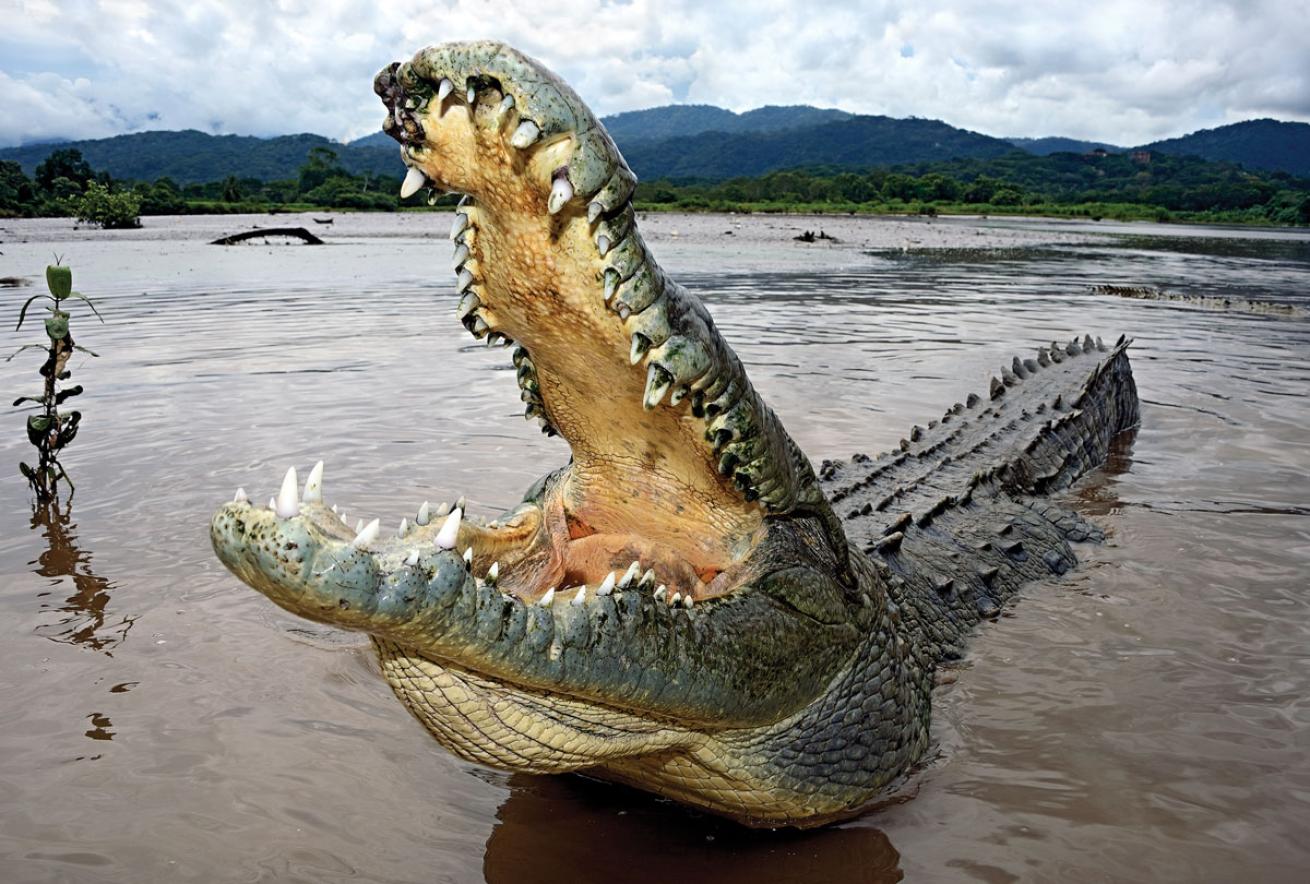
Scott JohnsonAmerican saltwater crocodile
1. Crocodile Man Tour
If you want to see a human being willingly climb out of a non-sinking boat to hand-feed a wild, 15-foot American saltwater crocodile at point-blank range, this is the place to go. Oh, the bird watching is excellent too.
2. Trogon Lodge
Located 7,000 feet above sea level near the small town of San Gerardo de Dota and surrounded by thick forest, Trogon Lodge is a great place to start a Costa Rican holiday. The setting is picturesque and tranquil, and the lodge provides guests the chance to ob- serve resplendent quetzals as they feed on the fruits of aguacatillo (“little avocado”) trees. Hiking and zip-line canopy tours are readily available.
3. Corcovado National Park
What Cocos is to diving, Corcovado National Park on the Osa Peninsula is to jungle hikes. National Geographic has proclaimed Corcovado “the most biologically intense place on Earth in terms of biodiversity.” The park’s habitats support all four Costa Rican monkey species, jaguars, tapirs and anteaters. Drake Bay Wilderness Resort and La Paloma Lodge enable guests to visit both Corcovado and nearby Cano Island Biological Reserve year-round, and go humpback whale watching each winter.
4. The Night Tour
If you’ve never donned a headlamp and gone on a jungle night walk, add it to your bucket list. While on the Osa Peninsula, biologist Tracie Stice and Costa Rican naturalist guide Gianfranco Gómez will open your eyes to a world that goes unseen by most, where you can photograph adorable three-toed sloths, cute red-eyed tree frogs, the incredible viper caterpillar, not-so-cute scorpions and much more.
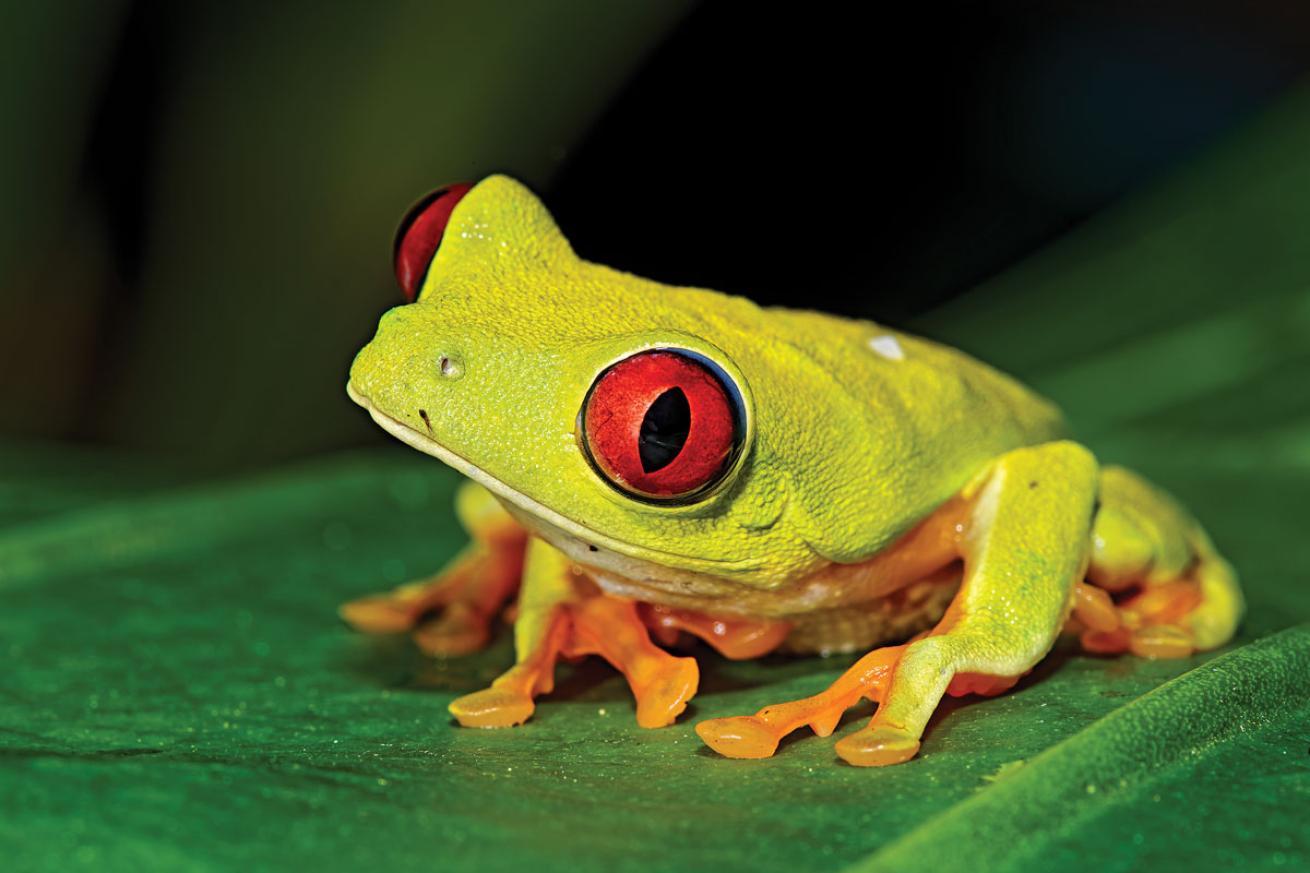
Scott JohnsonRed-eyed tree frog.
5. Manuel Antonio National Park
Manuel Antonio National Park is the most-accessible of Costa Rica’s national parks, a condensed version of Corcovado. The surrounding community has become one of the most upscale, so expect more crowds than at more-remote parks when planning your itinerary.
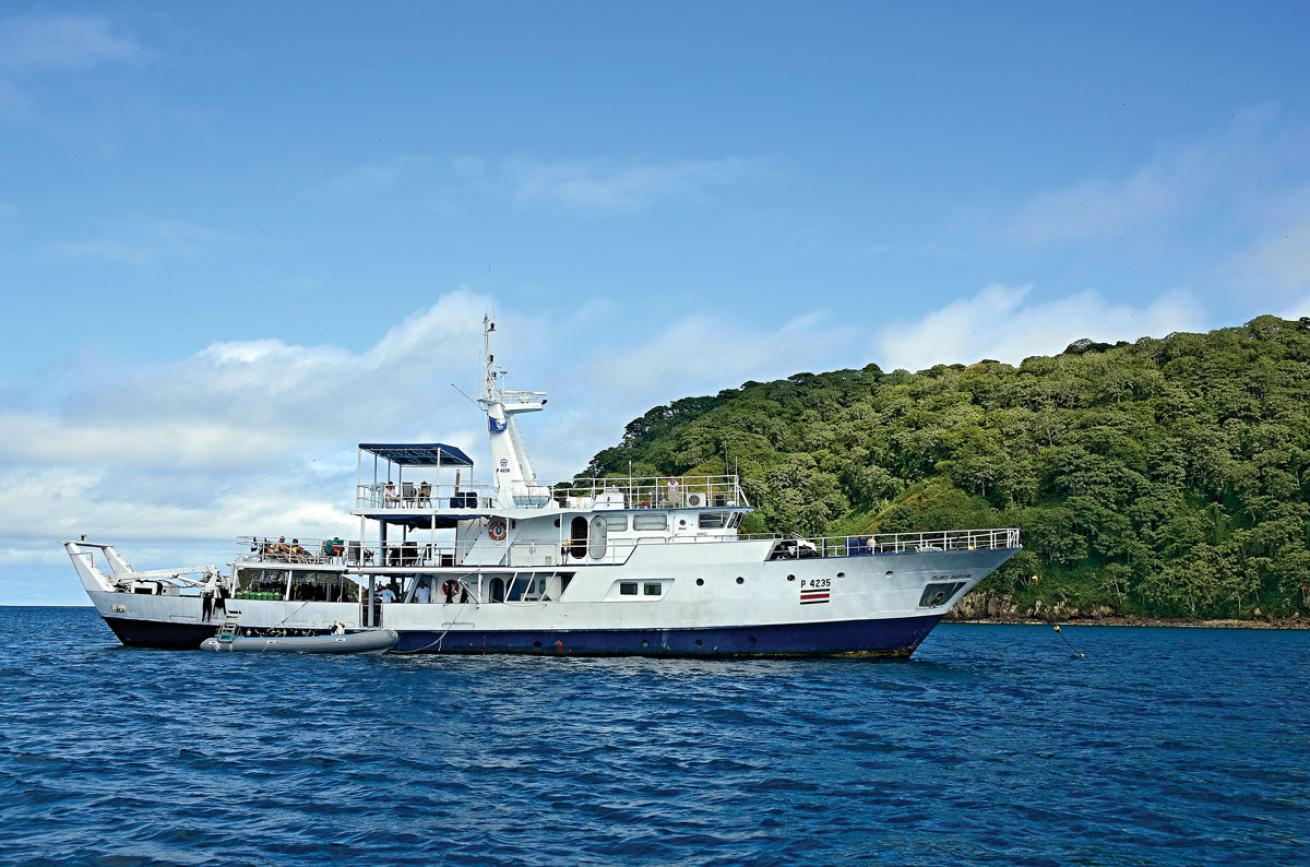
Courtesy Aggressor AdventuresOkeanos Aggressor
NEED TO KNOW
When to Go Diving is good year-round. The rainy season—June to November—offers more opportunities to dive with large schools of scalloped hammerheads, but presents more challenging conditions.
Travelers Tip Costa Rica is a relatively convenient international destination for much of the U.S. as it is only a three-and-a-half- hour nonstop flight from Houston and in the Central Standard Time zone (daylight saving time is not observed). Traveling from the Pacific port city of Puntarenas to Cocos is more challenging. Be sure to pack motion sickness medicine for the long voyage. Crossings range from calm to “sleep is my friend.”
Dive Conditions Conditions can change dramatically from site to site or even at the same site in the blink of an eye. Water temperatures range from 75°F in rainy season to 82°F in the dry season. Thermoclines may drop temps an additional 10 degrees. Visibility varies from 50 feet in rainy season to more than 100 feet in dry season. The variable conditions and remote location make Cocos a destination for advanced divers.
Suggested Training Advanced Open Water
Operator Okeanos Aggressor I is a powerful vessel built to withstand the rigorous demands of open-ocean crossings and outfitted to cater to 22 passengers in style and comfort. At a length of 110 feet and with a beam of 24 feet, Okeanos Aggressor I features spacious accommodations, staterooms with individual climate control, en suite bathrooms and TV/DVD, and an expansive dive deck that gives photographers and non-photographers alike plenty of room to don wetsuits and tinker with gear. Gourmet meals are served in a dedicated dining room. Sun lovers can soak in the rays on two different decks. Aggressor Adventures also operates a second yacht in Cocos, Okeanos Aggressor II; learn more at aggressor.com.
Price Tag A deluxe stateroom is $5,599 per person; twin stateroom is $5,299 per person; and the quad stateroom is $5,199 per person.

